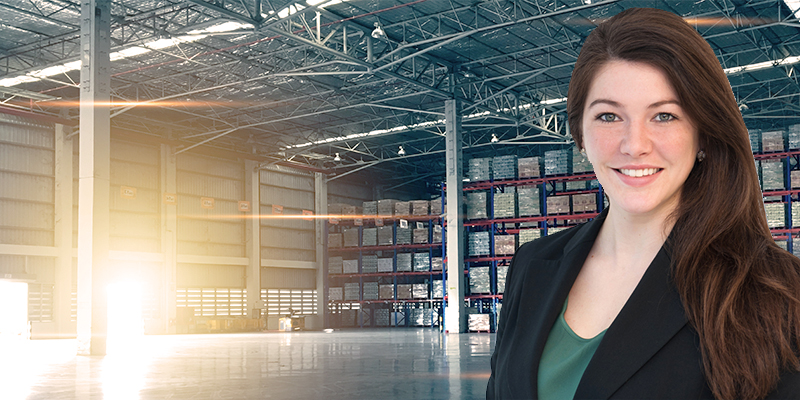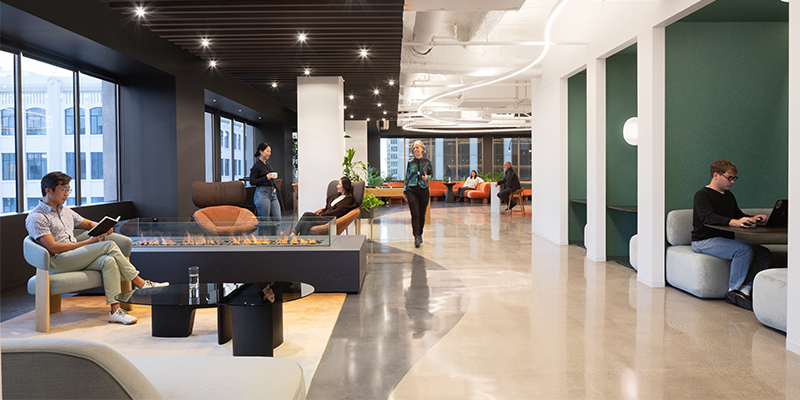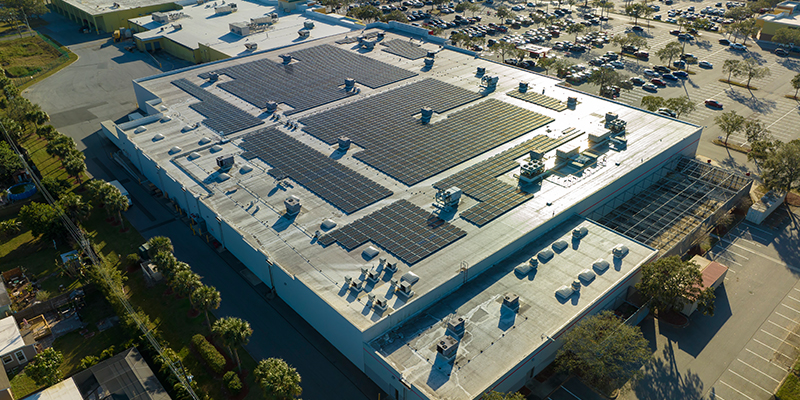“Technology is going to be among the most important things that impacts the industrial sector,” began Rebecca Rockey, economist and global head of economic analysis and forecasting at Cushman & Wakefield, at I.CON West’s keynote session this week in Long Beach, California. “The industrial sector stands to be the first industry to experience that adaptation as the nature of our economy and demographics change.”
The workforce is aging, with 23% of current workers reaching retirement age in the next decade, and subsequent generations that are much smaller. Transportation, manufacturing and wholesale will be impacted, with around 30% of these workforces aging over 65 years old in the decade ahead.
“GDP is a function of labor, capital and productivity,” she said. “A slowing population and slowing workforce growth means that we need technology to help us create output at higher rates – to offset lost output from less labor growth.” She noted that the U.S. has been experiencing a metamorphosis within its economy for decades now, as investment in technology and research and development expand to a significant portion of GDP – over half of all private investment are in these line items, which in total is nearing 10% of the overall economy.
“Today we are at a point where the labor market is historically tight,” said Rockey. “Everything about our outlook ties to the labor market – both the good and bad – and that’s going to dictate the entire trajectory of where the economy is headed.”
Right now, there are roughly two job openings for every unemployed person, and the unemployment rate hasn’t been this low (3.4%) for 54 years. Pre-pandemic, the rate was 3.5%, but it is not a solid comparison because there are 3.2 million fewer workers in the labor force today. This contributes to the incredible imbalance in the labor markets, estimated to be a shortage of 3.9 million workers, and represents a dynamic that is fundamentally different from the conditions in previous years.
There are 2.7 million more jobs in the overall labor market than there were in 2019, although the distribution of those new jobs is highly uneven across sectors and markets. Pre-pandemic, warehouse and last-mile jobs represented 9 million of the 25 million total industrial jobs that existed then. During the pandemic, those subsectors accounted for 65% of all new industrial jobs, driven by the explosion of e-commerce.
“We are in the midst of a rate hike cycle different than anything we’ve seen since the 1980s, and there is a lot of discomfort there,” she said. “The Fed says they need the unemployment rate to go up for wage growth to come down to a level consistent with its inflation mandate.” She noted that there are signals of a downturn on the horizon, with deeply inverted yield curves, decades-low consumer confidence and the construction cycle slowing down. It’s not yet reflected in job losses, but when projects underway finally deliver, there won’t be new projects to immediately replace them.
“A recession is a necessary ingredient to right-size the economy and get it back to a place that is sustainable,” she said. And while it’s going to be a challenging end to 2023 and start to 2024, it sets up the second half of 2024 and 2025 for growth and the start of a new business cycle.
Despite these challenges, the industrial sector is poised for resiliency, even as consumers pull back on goods spending and manufacturing contracts.
“When the economy eventually contracts, demand will slow; we’re calling for a mild recession. The good news for industrial is that we are still expecting decent absorption for the next two years, then an acceleration for demand back to a growth rate of 275 million to 300 million square feet per year,” said Rockey, noting that Cushman & Wakefield is calling for vacancy to go from 3.3% today to 6%, which is still considered a tight market.
That 3.3% vacancy includes many properties built before 2000 that don’t meet the needs of the modern tenant. “Something better is coming along,” said Rockey. “Right now, we’re tracking 683 million square feet of construction, and a portion of the 424 million square feet of vacant speculative space will be leased before delivery.”
How do supply, demand and vacancy rates translate into rent pressure? “The reality is that the double-digit rent pressure we’ve had the last few years isn’t sustainable,” she said, noting that rents are still predicted to grow even as vacancy ticks up.
“For the capital markets, industrial as an asset class we’re most bullish about,” she said. “In the last 6-12 months we have seen the fastest and greatest magnitude increase in the cost of debt that we have seen in 40 years. That will affect commercial real estate and all asset classes. However, even as the effects of higher interest rates percolate through markets, industrial will benefit from greater institutionalization and its very strong NOI backdrop. This makes it a stand-out in what will be an income-focused era for the next year.”

This post is brought to you by JLL, the social media and conference blog sponsor of NAIOP’s I.CON West 2023. Learn more about JLL at www.us.jll.com or www.jll.ca.








